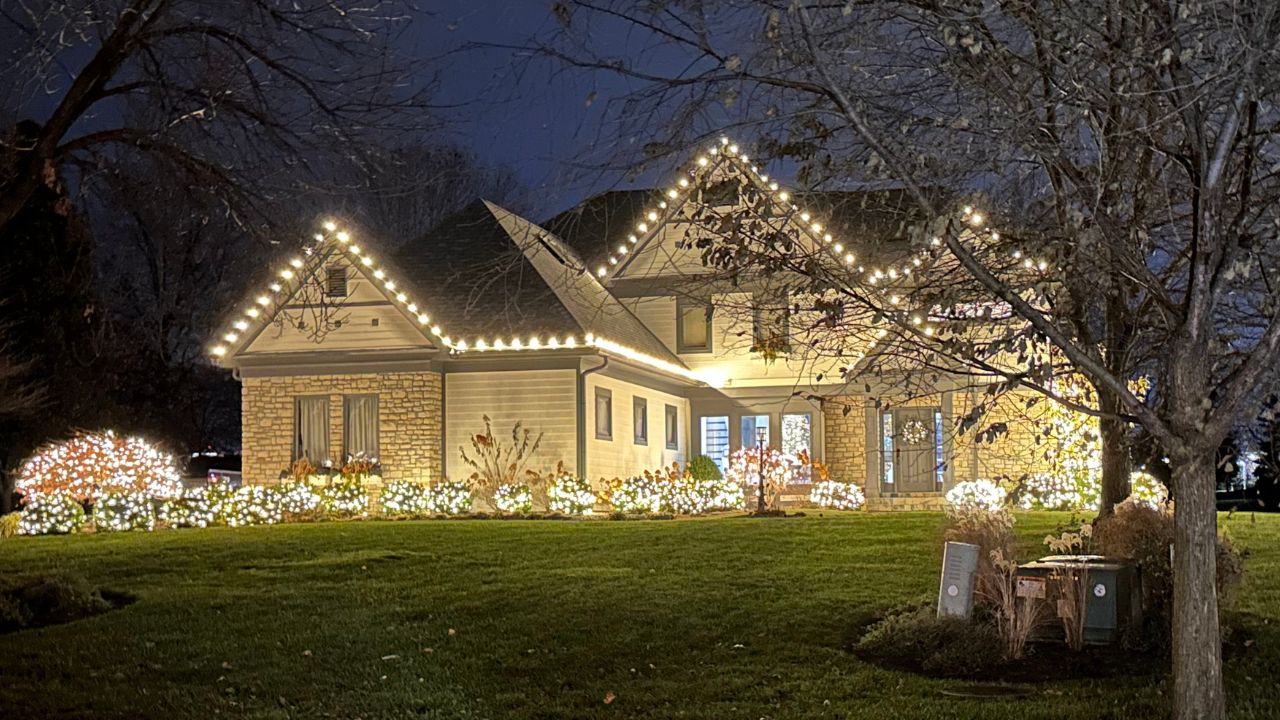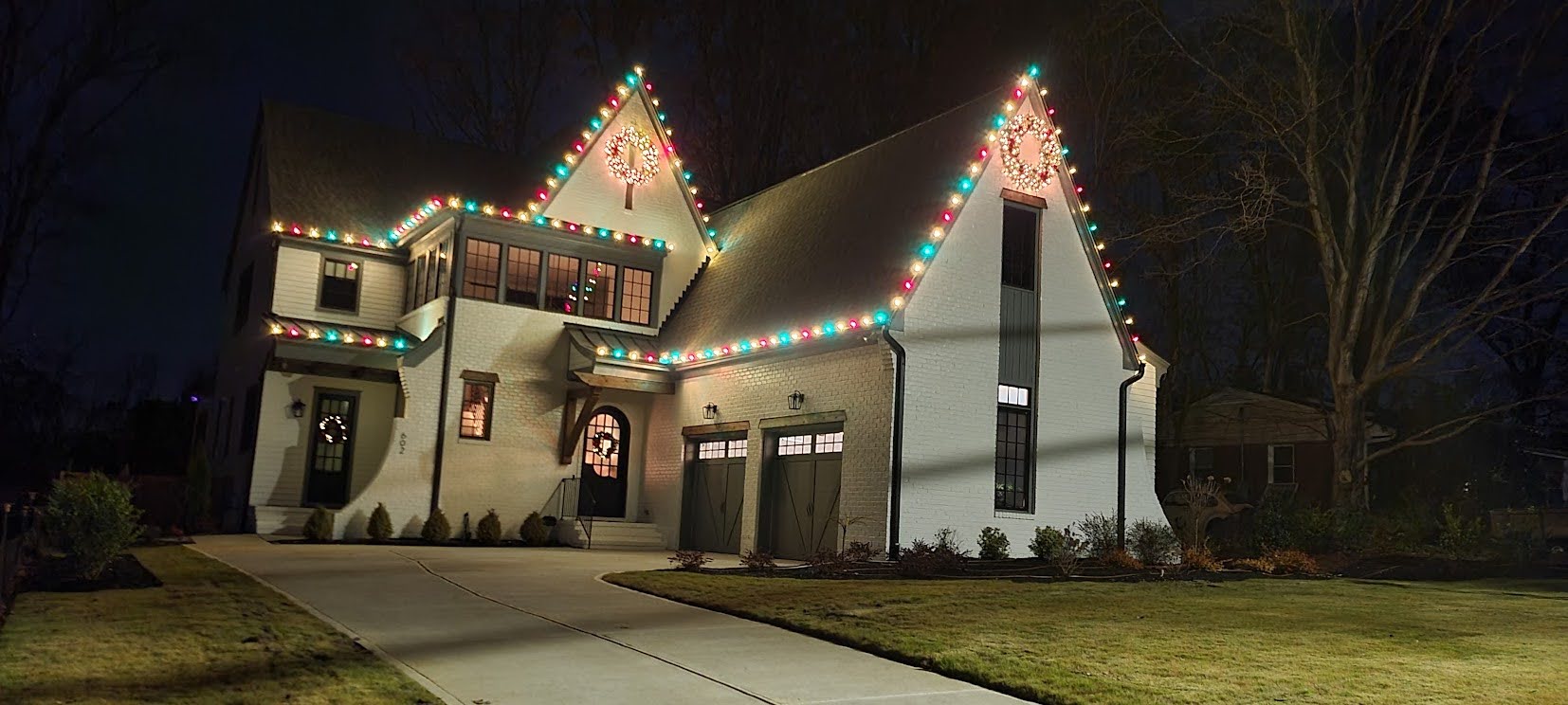Christmas Lights Business Website
🎄 Launch Your Online Presence with Ease🎄
No Tech Skills Required!
🎄 Illuminate Your Business Online🎄
Custom Christmas Light Business Website for Only $199/Month!
Attract More Customers, Save Time, and Grow Your Business with These Powerful Features:
Professional Website
Tailored design for Christmas light installers
Mobile-responsive for on-the-go customer
Completely Customizable
Easy to use content management system
Advanced customization options for tech-savvy users
Featured Listing on Christmaslights.io
Get noticed by potential customers
Rank higher in local searches
Optimized Location Service Area Page
Highlight your service areas
Attract nearby customers with local SEO
Ready-to-Go Blog
Built-in functionality
On-going SEO with 2 Blog Posts a Month
Powerful Analytics Integration
Track your success with Google Analytics
Optimize your site with Google Search Console
Optional Professional IVR Phone System
Customizable greetings and menu options
Present a polished image to callers
Why Choose Our Christmas Lights Business Website?
Save Time: Focus on installations while we handle your online presence
Cost-Effective: Save thousands compared to custom website design, hosting and marketing
Attract More Customers: Optimized content brings local clients to you
Look Professional: Impress potential customers with an updated modern website
Secure and Reliable: Built-in security features protect your and your customers' data
Stay Ahead: Gain insights to outperform your competition
Grow Your Business: All the digital tools you need to expand your reach
See Website Example: Pink Pro Holiday Lights

🎄 Don't Let Another Holiday Season Pass You By!
Your competitors are going digital - can you afford not to?
Get Started Now for $199/month
👉 No long-term contract - cancel anytime!
Illuminate your business's future today with your
own Christmas Lights Business Website
Frequently Asked Questions
Do I need technical skills to use this website?
Not at all! Our platform is designed to be user-friendly for all skill levels, with options for both the simple set it and forget user or and advanced customization.
Is there a long-term contract for this service?
No, there's no long-term commitment. You can cancel your subscription at any time.
Can I use my own domain name with the website?
Absolutely! You can use your existing domain name or we can purchase and set up a new one for your business.
How does the Christmaslights.io listing help my business?
Your featured listing on Christmaslights.io increases your visibility to potential customers searching for installation services in your area, potentially leading to more inquiries and bookings.
Discover Expert Tips on Our Blog

This Door Knocking Landed 400 Christmas Light Jobs
In the competitive world of professional Christmas light installation, finding effective ways to grow your customer base is crucial. One often-overlooked strategy that's proving incredibly successful is door-to-door sales. In this article, we'll dive into insights from Eric, a successful Christmas light installation business owner who scaled from 40 to 367 accounts in one season through strategic door-knocking.
The Power of Direct Sales in the Christmas Light Industry
Unlike other door-to-door sales industries such as security systems or solar panels, selling Christmas light installation services has a unique advantage: it's about selling magic and joy. When you approach someone's door to discuss Christmas lights, you're often met with excitement rather than skepticism. This emotional connection can make the sales process significantly more effective and enjoyable for both the salesperson and the potential customer.
Selecting the Right Neighborhoods
The key to successful door-to-door sales starts with choosing the right areas to canvas. Here are the primary considerations:
1. Target Demographics
- Focus on middle to upper-middle-class neighborhoods
- Typical sweet spot: Homes valued between $400,000 to $1 million
- Don't completely rule out lower-priced areas - sometimes homeowners in modest homes will invest in holiday cheer
2. Coverage Strategy
- Map out specific neighborhoods
- Aim to speak with 90% of residents in each targeted area
- Stay in one neighborhood until you've achieved this coverage goal
- This approach allows for better referral opportunities and name recognition
Legal Considerations for Door-to-Door Sales
Before hitting the streets, ensure you're operating legally:
1. Check Local Regulations
- Research county-specific solicitation permit requirements
- Permits typically cost between $25-$100 per season
- Some areas require background checks and fingerprinting
2. Understanding No-Soliciting Signs
- Public street neighborhoods cannot legally prevent solicitation
- Only privately maintained communities can enforce no-soliciting rules
- Individual home "No Soliciting" signs should be respected

Pricing Strategy for Profitability
One of the most critical aspects of scaling a Christmas light installation business is proper pricing. Many installers make the mistake of underpricing their services:
1. Move Beyond Low-Price Competition
- Avoid the trap of matching competitor prices
- Focus on value rather than being the cheapest option
- Remember: You're the one taking the risks on the roof
2. Premium Pricing Structure
- Aim for $8+ per foot instead of the common $3-4
- Create package pricing for different footage ranges
- Set minimum footage requirements (e.g., 150 feet minimum)
- Include installation, removal, and storage in your pricing
Building an Effective Sales Team
To scale through door-to-door sales, you'll need to build and manage a team, here are a few recruitment and compensation ideas:
1. Recruitment Strategies
- Target college students during summer breaks
- Start recruiting in January before other industries
- Use social media and campus recruiting events
- Expect about 50% turnover rate
2. Compensation Structure
- Commission-based payment (e.g., $1.50 per foot sold)
- Package-based commission systems
- Check local labor laws regarding minimum wage requirements
- Consider using appointment setters if minimum wage is required

The Sales Process
Successful door-to-door sales rely on a refined approach:
1. Initial Contact
- Introduce yourself and your company
- Mention you're installing lights in the neighborhood
- Ask if they currently have someone installing their lights or do it themselves
- Keep the initial pitch simple and conversational
2. Building Interest
- Show excitement about Christmas and holiday decorating
- Use visual aids showing popular lighting patterns
- Ask what they envision for their home
- Offer multiple package options
3. Closing Techniques
- Don't make price the focus of the conversation
- Present it as an all-inclusive service
- Offer good-better-best options
- Use assumptive closing techniques
Operational Efficiency
To manage a successful door-to-door operation:
1. Territory Management
- Use apps like Active Knocker to track sales team activity
- Map out specific areas for each team member
- Monitor real-time location and progress
- Track contact attempts and results
2. Time Management
- Focus on prime hours (4:00 PM - 8:30 PM)
- Expect to hit 50-100 doors in a four-hour period
- Plan for longer conversations during peak seasons
- Adjust strategies based on response rates
Best Practices for Success
1. Service Offerings
- Focus on roofline installations
- Consider avoiding window installations to minimize callbacks
- Add tree-wrapping services strategically
- Create clear package boundaries
2. Follow-up Systems
- Use door hangers for houses where no one answers
- Track return visits for homes where door hangers are removed
- Send immediate email proposals for interested customers
- Maintain a database of potential future customers
3. Training Your Team
- Focus on emotional selling rather than technical details
- Teach proper measuring techniques
- Train on package presentation
- Emphasize customer service and professionalism

Scaling Considerations
As you grow your door-to-door sales operation:
1. Seasonal Planning
- Start sales as early as May
- Create special promotions (e.g., Christmas in July)
- Plan for reduced sales staff during school seasons
- Maintain year-round recruitment efforts
2. Quality Control
- Implement proper measurement verification systems
- Create detailed installation guides
- Maintain consistent pricing structures
- Regular team training and updates
3. Future Growth
- Plan for equipment and inventory needs
- Build installation crews to match sales growth
- Develop systems for efficient installation
- Create clear communication channels between sales and installation teams
Keys to Long-term Success
1. Maintain Professional Standards
- Proper insurance coverage
- Safety protocols
- Quality control measures
- Customer service excellence
2. Focus on Value Over Volume
- Target quality clients over quantity
- Maintain premium pricing
- Deliver exceptional service
- Build strong referral networks
3. Continuous Improvement
- Regular team training
- Process refinement
- Customer feedback integration
- Market analysis and adaptation
Door-to-door sales can transform your Christmas light installation business when done correctly. By focusing on proper pricing, professional presentation, and systematic growth, you can build a sustainable and profitable operation. Remember that success in this industry isn't about being the cheapest option – it's about providing quality service, professional installation, and creating magical holiday experiences for your customers.
The key to scaling through door-to-door sales is believing in your service's value and communicating that confidence to potential customers. When you approach each door with enthusiasm and professionalism, you're not just selling Christmas lights – you're selling the joy and magic of the holiday season.

Q: What's the best time to start selling Christmas light installation services?
A: Start selling as early as May. While some customers might think it's too early, this allows you to build your client base before the rush and ensures you can accommodate all installations. Many successful businesses sell throughout summer, with special promotions like "Christmas in July," and see another surge in sales after Halloween.
Q: How much should I charge per foot for Christmas light installation?
A: Aim for $8+ per foot, rather than the common $3-4 per foot that many installers charge. Remember to set a minimum footage requirement (such as 150 feet) regardless of the actual footage used. This premium pricing reflects the professional service, risk, and complete package including installation, removal, and storage.
Q: What are the best hours for door-to-door sales?
A: The prime time for door-to-door sales is between 4:00 PM and 8:30 PM. This timeframe catches people when they're most likely to be home from work. You can expect to knock on 50-100 doors during a four-hour period, though the number of actual conversations will vary.
Q: Do I need special permits for door-to-door sales?
A: Yes, most counties require a solicitor's permit. These typically cost between $25-$100 per season. Check with your local authorities as requirements vary by location - some areas require background checks and fingerprinting. It's better to get the proper permits than risk fines or legal issues.
Q: How do I handle "No Soliciting" signs?
A: For individual homes with "No Soliciting" signs, respect these and skip those houses. For entire neighborhoods, if they're on public streets (city-maintained), they cannot legally prevent solicitation. However, privately maintained communities can enforce no-soliciting rules. Always check local regulations.

Q: What should I say when someone opens the door?
A: Keep your initial pitch simple and friendly. Introduce yourself and your company, mention you're installing lights in the neighborhood, and ask if they currently have someone installing their lights or do it themselves. Avoid making price the focus of the initial conversation.
Q: How do you pay door-to-door sales staff?
A: Most companies use a commission-based structure, such as $1.50 per foot sold. Some use package-based commission systems. However, check your local labor laws regarding minimum wage requirements. If minimum wage is required, consider using appointment setters paid hourly plus bonus instead of pure commission sales staff.
Q: What neighborhoods should I target?
A: Focus on middle to upper-middle-class neighborhoods, typically homes valued between $400,000 to $1 million. However, don't completely rule out other areas - sometimes homeowners in modest homes will invest in holiday decorations. The key is to stay in one neighborhood until you've reached 90% of the homes.
Q: Should I include window lighting in my services?
A: Most successful installers avoid window lighting installations. While they can increase the total project cost, they often lead to more callbacks and maintenance issues. Focus instead on roofline installations and potentially tree-wrapping services for better efficiency and customer satisfaction.
Q: How many doors do I need to knock on to make a sale?
A: On average, expect to knock on about 50 doors to get one sale. This includes houses where no one answers. More experienced salespeople might have better ratios, while newer sales staff might need to knock on up to 100 doors per sale. Remember that each "no" gets you closer to a "yes," and consistency is key to success.
Copyright ©2024 All Right Reserved website designed by christmaslights.io
Terms of Service / Privacy Policy
Have questions or need assistance?
Contact us at (855)619-LITE


